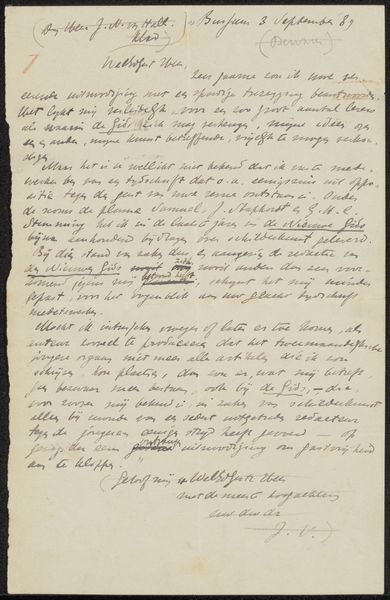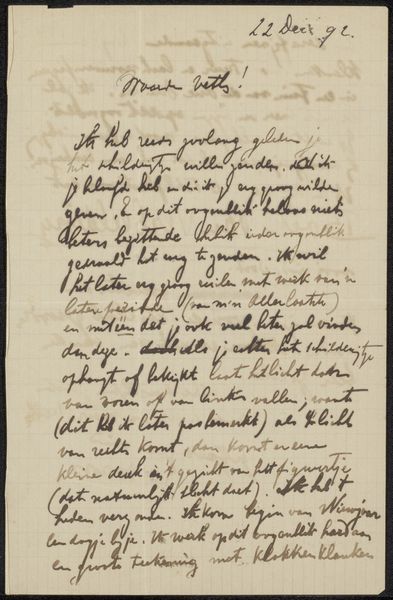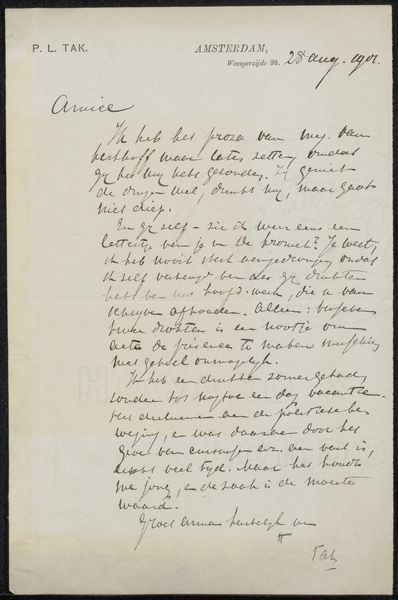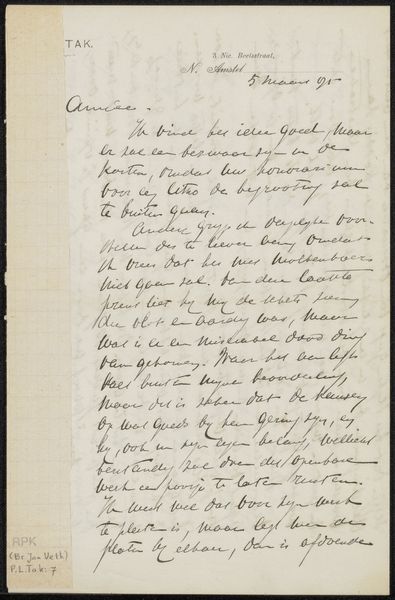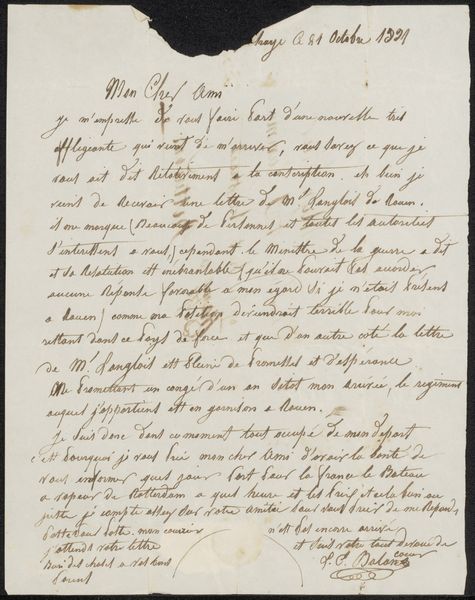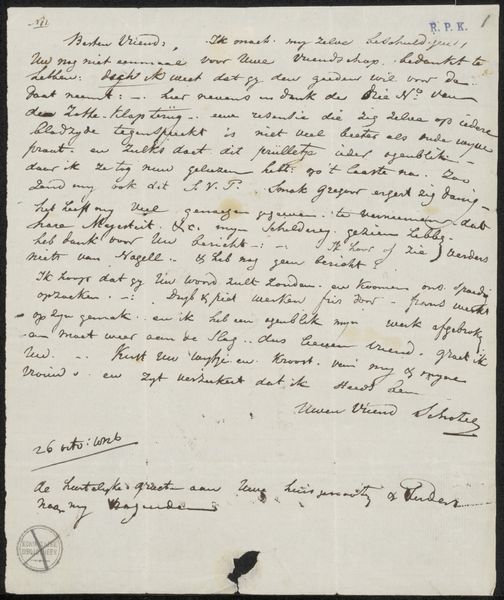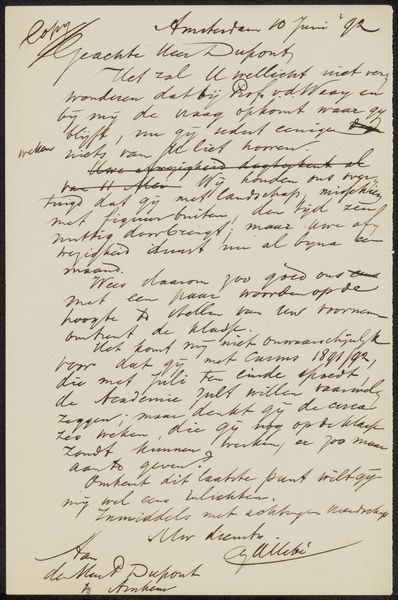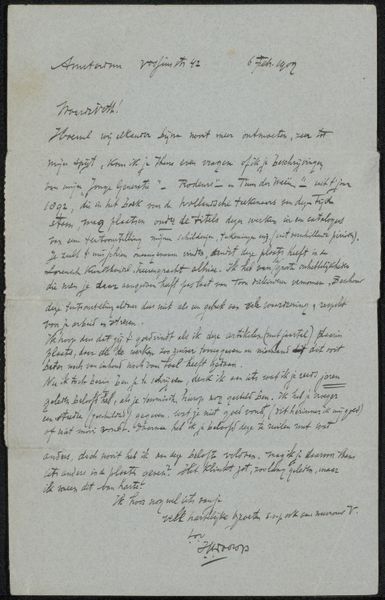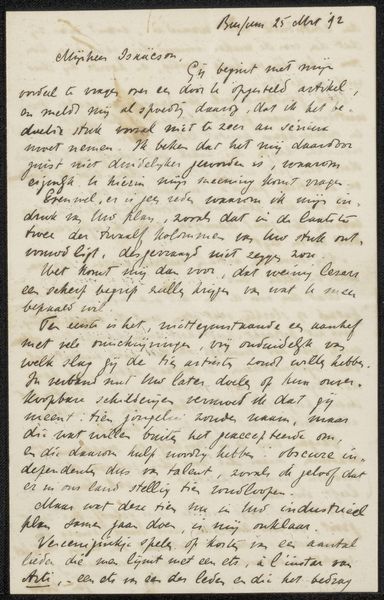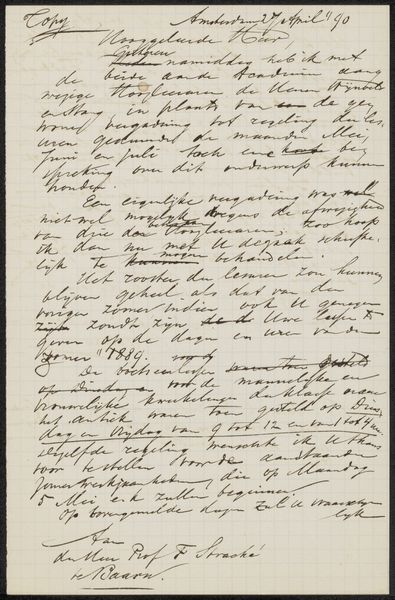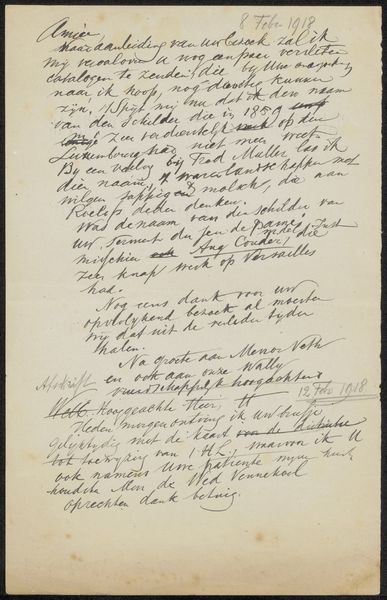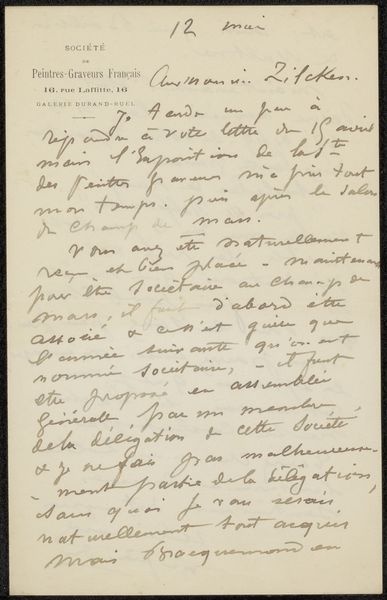
drawing, paper, ink, pen
#
portrait
#
drawing
#
paper
#
ink
#
pen
#
genre-painting
Copyright: Rijks Museum: Open Domain
Curator: This is a drawing by Jan Veth, active between 1874 and 1925. Titled “Brief aan Eduard Karsen”, it's executed with pen and ink on paper. A piece of correspondence, if you will. Editor: It appears incredibly intimate. The cursive script lends a certain aura to this… what could be simply a note. Is it about daily life or some intense artistic debate? Curator: Knowing Veth, who wore many hats as an artist, critic, and even a biographer, it's highly likely this letter touches upon both. Veth, alongside his portraits, engaged in deep social critique, so letters become very important in that type of social exchange. Editor: Social critique is a vital thread, as well as being from the period where the Impressionist ideals and style began being widely adopted in the art world. Curator: Absolutely. Letters provide invaluable insight into the artistic dialogues shaping movements. They’re rarely neutral communications but function as active battlegrounds, a medium to flex arguments and create consensus. We get that with a letter like this. Editor: The very act of committing thoughts to paper carries weight, particularly in this era, as opposed to the ephemerality of some modern digital communication. Letters are material witnesses. Curator: Precisely. As a medium, a letter becomes almost an archive. They reveal social networks and how artists negotiated ideas. One wonders how they imagined this form of discourse. Editor: It also shows how certain circles or networks were actively supported, perhaps even closed off from certain members who would then experience forms of ostracisation. Was that the case here? Curator: Perhaps. However, for modern audiences, they serve as points of access. Correspondence grants entry into understanding artists’ lives and how artwork relates to political moments in social life, or, conversely, completely unrelated issues and ideas. The content helps show how deeply rooted art practices are in history, yet this little note remains. Editor: An elegant reminder of a very complex relationship to the artistic environment. This is also, quite simply, a delicate and poignant work of art in its own right. It has that effect. Curator: And its inclusion in the Rijksmuseum solidifies its place in the narrative. We hope viewing and reflecting on this has helped enhance everyone's relationship with social art, too.
Comments
No comments
Be the first to comment and join the conversation on the ultimate creative platform.
